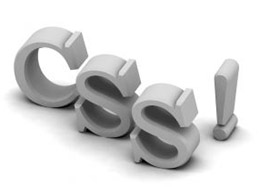You may have heard of the benefits of using CSS. CSS stands of Cascading Style Sheets and they are a set of ASCII code instructions whose purpose is to specify the appearance and format of the particular webpage that is being uploaded in a particular site. You can specify the CSS styling from the webpage itself, or link it from a separate page. CSS is such a useful protocol that not only can it be used for HTML or XHTML pages, but XML format documents can also use CSS.
The purpose of CSS is to delineate in an easy manner, the separation of document content from document presentation or appearance – via an easy to control file. This makes web design today a whole lot easier than in the past.
The enabling of this divide between content and presentation can augment the accessibility of the content, offer more litheness and control in the arrangement of presentation characteristics.
Furthermore, CSS also enables multiple webpages to share the same formatting, and reduces complications and recurrence in the structural architecture of the content presentation. The same markup page can be projected in more diverse styles for different media conveyance methods, besides traditional text.
The good thing about CSS is readers can overrule the one specified by the webpage author by using a different style sheet (possibly by using one on their own computer), to supersede the original CSS file. That is why you can see some websites which allow you to change the look via a template switcher.
 In CSS language, simple syntax is used, including a number of commonplace words to indicate the names of different style properties. It lets authors to shift much of that information to a different style sheet ensuing in considerably simpler HTML markup.CSS has different levels or profiles (rather like CMS versions). In CSS the levels are built upon the older ones, typically adding new features, and are so far, we have CSS1, CSS2 and CSS3.
In CSS language, simple syntax is used, including a number of commonplace words to indicate the names of different style properties. It lets authors to shift much of that information to a different style sheet ensuing in considerably simpler HTML markup.CSS has different levels or profiles (rather like CMS versions). In CSS the levels are built upon the older ones, typically adding new features, and are so far, we have CSS1, CSS2 and CSS3.
Prior to Cascading Style Sheets, authors who wished to allocate typographic characteristics to a specific heading in their document had to use a particular HTML font repeatedly, each time that font was deployed. But not anymore with CSS, with which you can specify what font size, colour, typeset and style (bold, italic), to use. The supplementary presentational markup in the old HTML made webpages more complicated and harder to maintain whenever you needed to change things.
For printing, CSS can label things like color, font alignment, font size, borders, margins, and spacing with precision and in a standardized manner. The ability of CSS is such that it can autonomously control both on-screen and printed versions, so you don’t have to worry if there are any discrepancies.
CSS can be very helpful when you apply a standard style across all texts in your website. This way, when you need to make changes in your document, for example the color or the font, all you need to do is to amend your style sheet, and all your documents will save the changes automatically.
